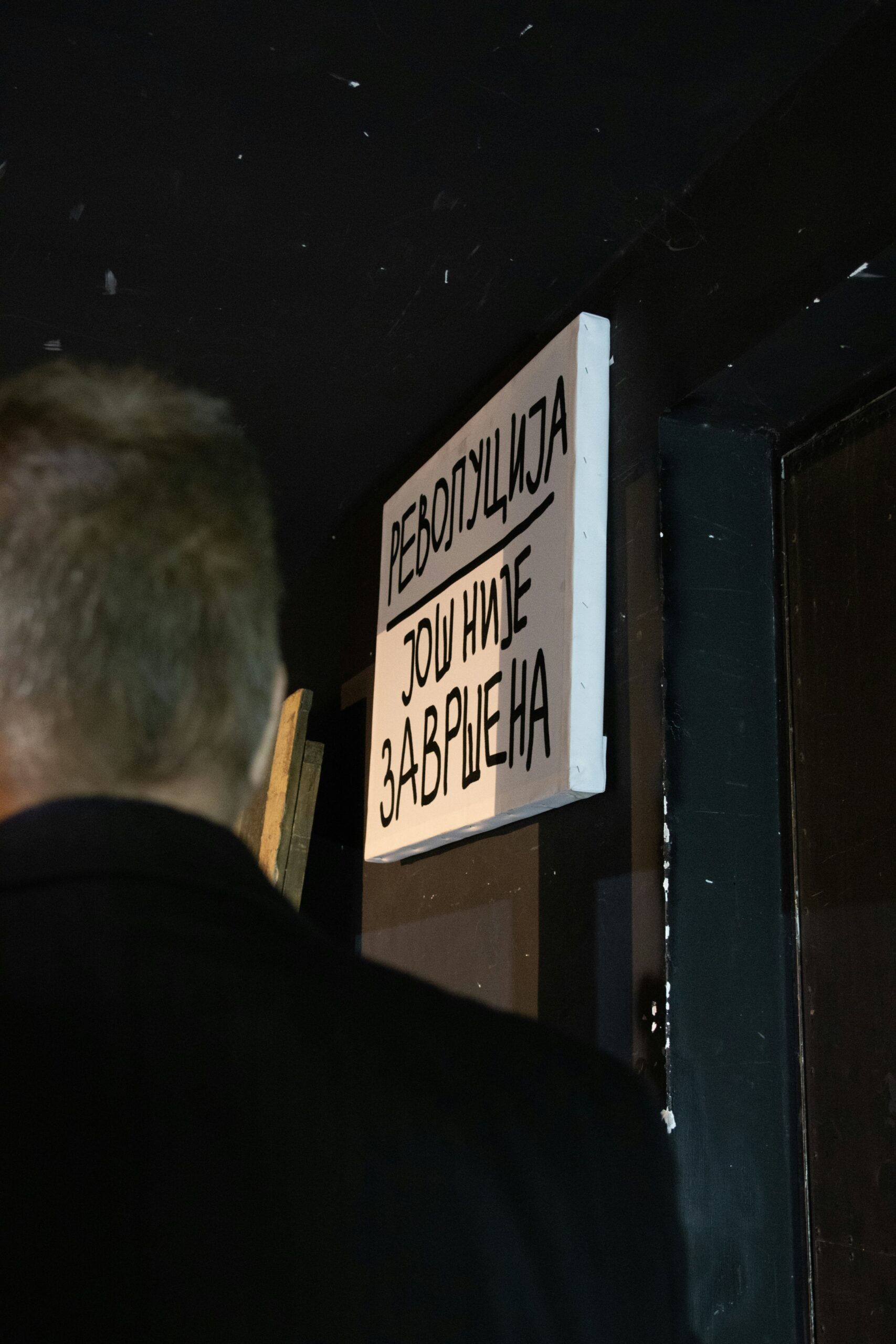Introduction
The recent riots in Harehills, Leeds have captured national attention, prompting widespread concern and discussion. This unprecedented wave of unrest unfolded over the past few weeks, marking a significant moment in the history of this diverse community. The timeline of events reveals a rapid escalation from peaceful demonstrations to chaotic confrontations, drawing individuals from various neighborhoods and backgrounds into the fray.
The initial spark of tension can be traced back to a series of incidents involving local authorities and community members, which quickly spiraled into widespread discontent. The immediate impact on Harehills has been profound, with significant damage to property, disruption of daily life, and a palpable sense of unease among residents. Key areas within the neighborhood have been transformed, with businesses shuttered and public services strained under the weight of the unrest.
As we delve deeper into the causes and consequences of these riots, it is essential to understand the broader context in which they occurred. The dynamics within Harehills, characterized by a rich tapestry of cultural and ethnic diversity, play a crucial role in shaping the narrative of these events. This introduction provides a foundation for a comprehensive analysis, examining the underlying grievances, the actions of local authorities, and the broader implications for community relations in Leeds.
Background of Harehills, Leeds
Harehills, a suburb located in the northeastern part of Leeds, is known for its diverse and multicultural community. Historically, Harehills has been home to a significant number of immigrant populations, contributing to its rich cultural tapestry. The area has seen waves of migration, starting from post-war European immigrants, followed by South Asian communities in the latter half of the 20th century, and more recently, African and Eastern European settlers.
Economically, Harehills has faced numerous challenges over the years. The suburb is characterized by relatively high levels of unemployment and underemployment, with many residents engaged in low-paying, precarious forms of work. Housing in Harehills is predominantly terraced and often overcrowded, reflective of the socio-economic constraints faced by its inhabitants. Educational attainment in the area tends to lag behind other parts of Leeds, further contributing to a cycle of poverty and limited upward mobility.
Despite these challenges, Harehills boasts a vibrant community spirit. Numerous community organizations and local businesses contribute to the area’s resilience, offering support and fostering a sense of belonging among residents. Cultural festivals, places of worship, and community centers play pivotal roles in maintaining social cohesion, even amidst economic hardships.
However, Harehills has not been immune to social tensions. Historical grievances, often rooted in economic disparities and cultural misunderstandings, have occasionally flared up into more pronounced conflicts. These tensions are exacerbated by systemic issues such as inadequate access to public services, perceived inequalities in law enforcement, and a lack of investment in local infrastructure. Understanding these underlying factors is crucial for comprehending the recent riots that have shaken the community.
The recent riots in Harehills, therefore, cannot be viewed in isolation. They are the culmination of long-standing socio-economic and cultural issues that have simmered under the surface for years. A thorough examination of Harehills’ history and demographics provides essential context, allowing for a more nuanced understanding of the events that have unfolded.
Timeline of Events
The recent riots in Harehills, Leeds, have been a subject of intense scrutiny and analysis. To understand the complexity of these events, it is imperative to examine the timeline of key incidents that unfolded. The sequence of events began on the evening of October 5, 2023, when small groups started gathering at various points across the Harehills district.
At approximately 6:30 PM, the first signs of unrest were reported. Eyewitnesses recounted seeing groups of individuals congregating near key landmarks, such as Harehills Park and Bayswater Road. Initial reports suggested that the gathering was in response to a local issue, though the specifics were unclear at the time.
By 8:00 PM, the situation had escalated. Media reports indicated a significant increase in the number of people joining the protest. The crowd’s mood turned hostile, with some participants engaging in acts of vandalism. Several shops on Harehills Lane were targeted, and there were reports of broken windows and looted goods.
Law enforcement was called to the scene around 8:30 PM. The police presence, however, seemed to further agitate the crowd. According to eyewitness accounts, confrontations between the police and the protesters began to intensify. By 9:00 PM, riot police were deployed in an attempt to control the situation. Tear gas and rubber bullets were reported to have been used as a means to disperse the crowd.
The peak of the riots occurred between 10:00 PM and midnight. During these hours, the violence spread to adjoining streets, causing widespread damage to public and private property. Eyewitnesses described the scene as chaotic, with fires being set and emergency services struggling to maintain order. Several arrests were made during this period, though exact numbers have yet to be confirmed.
Containment efforts began to show results around 2:00 AM on October 6, 2023. The combined efforts of the police and emergency services gradually brought the situation under control. By dawn, the riots had largely subsided, though the aftermath left a significant impact on the community.
This timeline of events serves as a crucial framework for understanding the recent riots in Harehills, Leeds. It highlights the rapid escalation from a peaceful gathering to a full-blown riot, emphasizing the importance of timely intervention and effective communication in managing such incidents.
Causes and Triggers
The recent riots in Harehills, Leeds, have drawn significant attention, with many seeking to understand the underlying causes and triggers. A comprehensive analysis reveals a complex interplay of socio-economic factors, specific incidents, and broader social and political issues that have contributed to the unrest.
Socio-economic factors play a pivotal role in understanding the roots of the riots. High levels of unemployment, inadequate housing, and limited access to quality education and healthcare have long plagued the Harehills area. These conditions have fostered a sense of disenfranchisement and frustration among residents, particularly among the younger population. According to sociologists, such socio-economic deprivation often creates a fertile ground for social unrest, as individuals feel marginalized and powerless to effect positive change in their lives.
Moreover, specific incidents can act as catalysts, igniting the existing tensions within the community. In the case of Harehills, a recent incident involving alleged police misconduct has been identified as a significant trigger. The perceived injustice and lack of accountability exacerbated the already simmering discontent, leading to a rapid escalation of violence. Community leaders have emphasized the importance of addressing these immediate triggers to prevent future occurrences.
Broader social and political issues also contribute to the complexity of the situation. The national discourse on systemic inequality, racial discrimination, and police-community relations has heightened awareness and sensitivity to these issues. The Harehills riots can be seen as a local manifestation of these broader societal challenges. Law enforcement officials acknowledge that while immediate responses are crucial, long-term strategies addressing these underlying issues are necessary for sustainable peace and stability.
Expert opinions underscore the need for a multi-faceted approach to addressing the causes of the riots. Sociologists advocate for comprehensive socio-economic reforms, community leaders call for increased dialogue and trust-building initiatives, and law enforcement officials highlight the importance of transparent and accountable policing. By considering these diverse perspectives, a more holistic understanding of the causes and triggers of the Harehills riots can be achieved, paving the way for effective solutions.
Impact on the Community
The recent riots in Harehills, Leeds have had a profound impact on the community, manifesting in both immediate and long-term consequences. The immediate aftermath saw significant property damage, with numerous businesses and homes bearing the brunt of the unrest. Broken windows, looted stores, and vandalized public property have left a visible scar on the landscape, requiring extensive repairs and posing financial challenges for local business owners and residents alike.
In addition to property damage, the riots resulted in numerous injuries. Emergency services were stretched thin as they attended to both minor and severe injuries, adding strain to an already burdened healthcare system. The psychological toll on residents cannot be understated. Witnessing or experiencing violence firsthand has left many community members dealing with anxiety, stress, and a sense of insecurity. The fear of recurrence has permeated daily life, affecting routines and inhibiting the overall sense of safety in Harehills.
Economically, the repercussions are substantial. Many local businesses, already struggling due to the broader economic climate, now face the added burden of repairing damages and restocking looted goods. This financial strain has led to temporary closures and, in some cases, permanent shutdowns, resulting in job losses and reduced economic activity in the area. The long-term economic recovery will require coordinated support from both local authorities and community organizations.
The community’s response has been a mix of solidarity and division. On one hand, many residents have come together to support one another, organizing clean-up efforts and fundraisers to help affected businesses and families. This sense of solidarity has fostered a stronger community spirit and a collective determination to rebuild. On the other hand, the riots have also exposed and, in some cases, deepened existing divisions within the community. Differing perspectives on the causes and responses to the riots have led to tensions and disagreements, highlighting the need for ongoing dialogue and reconciliation efforts.
Addressing the multifaceted impact of the riots in Harehills will require a comprehensive approach, combining immediate relief with long-term strategies for economic recovery and community healing. Only through collaborative efforts can the community hope to move beyond the recent turmoil and build a more resilient future.
Response from Authorities
The response from local authorities to the recent riots in Harehills, Leeds, was swift and multifaceted. The West Yorkshire Police were on the front lines, deploying substantial resources to control the situation and restore order. Officers were strategically positioned throughout the affected areas to prevent the disturbances from spreading further. The police utilized a combination of crowd control tactics, including the use of riot gear and non-lethal crowd dispersal methods, to manage the unrest effectively.
Local government officials also played a crucial role in addressing the crisis. Immediate measures were taken to communicate with the public, aiming to provide accurate information and quell any misinformation that might exacerbate the situation. Public statements were issued through various channels, including social media, press releases, and community meetings, to keep residents informed about the unfolding events and the steps being taken to ensure their safety.
In the aftermath of the riots, a series of policy changes and initiatives were introduced to prevent similar incidents in the future. The local government and law enforcement agencies collaborated on developing community engagement programs designed to build trust and improve relations between the police and the residents of Harehills. These initiatives focused on addressing underlying issues such as social inequality, youth unemployment, and community policing strategies. Additionally, there was an emphasis on increasing transparency and accountability within the police force to rebuild public confidence.
The response from authorities received mixed reactions from various stakeholders. Some community leaders and residents praised the police for their prompt action in restoring order and ensuring public safety. They highlighted the importance of the new community engagement programs and policy changes as positive steps toward long-term solutions. However, others criticized the heavy-handed tactics used during the riots, arguing that they may have exacerbated tensions and contributed to a sense of mistrust between the police and the community.
Overall, the response from authorities to the Harehills riots demonstrated a commitment to both immediate crisis management and long-term community resilience. The balance of praise and criticism underscores the complexity of managing such incidents while striving to foster a more inclusive and cooperative community environment.
Media Coverage and Public Perception
The media coverage of the recent riots in Harehills, Leeds, has played a crucial role in shaping public perception. Major news outlets such as BBC News, alongside local platforms like Leeds Live and YappApp, have provided extensive coverage of the events. Each platform brought its unique narrative, depth of analysis, and potential biases, contributing to a multifaceted portrayal of the riots.
BBC News, known for its comprehensive reporting, focused on the broader implications of the riots, often emphasizing the socio-economic factors that might have fueled the unrest. Their narrative aimed to provide a balanced view, highlighting both the destructive behaviors and the underlying grievances of the community. However, some critics argue that even prominent outlets like BBC News can occasionally slip into sensationalism, potentially amplifying the unrest’s dramatic aspects to capture audience attention.
Local news platforms such as Leeds Live and YappApp offered a more immediate, ground-level perspective. Leeds Live, for instance, provided real-time updates and detailed accounts from eyewitnesses, which added a layer of authenticity and urgency to their reporting. YappApp, on the other hand, utilized its strong social media presence to disseminate information quickly, often accompanied by user-generated content. These local outlets played a pivotal role in delivering timely news, but their proximity to the events sometimes led to emotionally charged reporting, which could influence public sentiment either positively or negatively.
Social media reactions and citizen journalism have further complicated the media landscape. Platforms like Twitter and Facebook became hotspots for eyewitness accounts, videos, and real-time discussions, often circumventing traditional media filters. While this democratization of information allowed for diverse viewpoints, it also led to the rapid spread of unverified or biased content. The viral nature of social media posts meant that certain narratives, whether accurate or not, gained traction quickly, significantly impacting public perception.
In essence, the media coverage of the Harehills riots has been a tapestry of varied narratives, each contributing to the overall understanding of the events. The interplay between traditional media, local news platforms, and social media has created a complex environment where public perception is continuously shaped and reshaped.
Moving Forward: Lessons and Solutions
The recent riots in Harehills, Leeds, have highlighted significant underlying social and economic issues that, if left unaddressed, could lead to further unrest. Moving forward, it is imperative to draw lessons from these events to foster a more cohesive and resilient community. A multi-faceted approach involving community engagement, policy changes, and strategic planning is essential to mitigate future conflicts.
Community engagement is a cornerstone in preventing further unrest. Local authorities and community leaders must foster open communication channels with residents to understand their grievances and aspirations. Establishing regular forums and workshops can allow for an ongoing dialogue where community members feel heard and valued. Additionally, investing in community centers and youth programs can provide safe spaces for young people, thereby reducing the likelihood of their involvement in disruptive activities.
Policy changes are also crucial. Policymakers must address the socio-economic disparities that often serve as root causes of unrest. This includes enhancing access to quality education, healthcare, and employment opportunities. Tailored job training programs and educational initiatives can empower residents with the skills necessary to thrive in a modern economy. Moreover, urban development plans should prioritize inclusive growth, ensuring that all community members benefit from economic advancements.
Fostering social cohesion involves creating an environment where diversity is celebrated and mutual respect is cultivated. Initiatives that promote cultural exchange and understanding can bridge divides between different community groups. Schools and local organizations can play a pivotal role by incorporating programs that teach conflict resolution and the value of diversity from an early age. Furthermore, enhancing the visibility and involvement of positive role models from within the community can inspire unity and cooperation.
Insights from community leaders, policymakers, and residents underscore the importance of a collaborative approach. As noted by several local figures, a community-driven strategy, supported by robust policy frameworks, can effectively address the underlying issues that led to the riots. By working together, Harehills can transform this challenging period into an opportunity for growth and solidarity, setting a precedent for other communities facing similar challenges.


